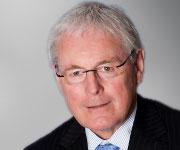ON Tuesday I was in Christchurch with my wife, Liz, after enjoying a week of sailing in the Bay of Islands.
Liz is from Christchurch, so we were staying with relatives who live about 8 km south-east of the CBD.
We had gone into the city to make the most of the favourable exchange rate to buy some clothing and gifts.
We were in a department store, Ballantynes, an old building on three levels, recently restored after damage caused by the earthquake that hit Christchurch last September.
At 12.50 pm Liz was in a cubicle on the first level about to try on a new top and I was standing in the centre of the floor when there was a sudden rumbling.
The building began to shake violently, with plaster fragments falling from the high ceiling and displays of glassware, mirrors and breakables crashing to the floor for a long 30 seconds.
Some customers screamed, but generally there was a very controlled response from everyone, particularly the staff who initially asked that we remain inside.
However, within about a minute we were advised to leave by the adjacent stairs. We had to manoeuvre past a large timber-framed glass door hanging across our path on one hinge, with broken glass everywhere.
Once outside, we moved quickly to the middle of the road. A car parked outside the doorway was crushed by concrete, the alarm sounding and lights flashing — and fortunately unoccupied.
No-one in my immediate vicinity was injured, and at that stage the death and devastation around the corner was not apparent, but the buildings around us, including the store, were badly damaged, with collapsing walls.
Traffic was in gridlock with police and emergency services finding it difficult to enter the area.
As we made our way about a kilometre to Hagley Park, where a refuge centre was later established, we saw buckled bitumen and areas of liquefaction as grey mud oozed through the earth’s surface.
The police were directing the very orderly but visibly distressed crowd to the park, away from buildings that could potentially shed further glass as the aftershocks persisted.
Some people were crying, obviously sensitised by the September 2010 earthquake. The air was opaque with dust and fragments continuing to fall, and sirens wailed across the city.
At the park, where many large oak trees had been uprooted, people had gathered in open areas with many supporting the older and frailer among them, commandeering some chairs from an outdoor restaurant.
The camaraderie was immediate and impressive, with the New Zealand spirit shining through as some occasional but guarded humour surfaced.
The car I had borrowed from my brother-in-law was stranded on the 7th level of a parking station, and would have been useless in the paralysed traffic. I could not operate my phone apart from sending reassuring text messages to family in Australia.
A local farming family took us to a motel about 2km away, passing roads broken and buckled, brick and stone fences flattened, many damaged buildings, petrol stations taped-off and closed, and people standing dazed beside their broken homes.
After we arrived at the motel and were standing outside there was a further tremor, with cars moving violently. We were provided with blankets and supported with cups of tea (in the typical spirit of NZ), before we were driven in a borrowed car to where we were staying.
Quite intense aftershocks continued, with a nearby and recently restored supermarket trashed as the ceiling and contents collapsed. However, we had only trivial breakages.
Stories of injuries and tragedy emerged, but despite my offers to assist as a doctor, the local rescue and medical teams were highly organised, and a casual foreigner would have been a nuisance.
I did contact the NZ Medical Association as I know the CEO Cameron McIvor, and was assured they did not require medical assistance at that time.
A large contingent of about 430 Australian doctors had been in Christchurch for a scientific meeting of the Urological Society of Australia and New Zealand. Many had also offered to provide medical assistance if needed.
As I write this we are preparing to fly home on the flight we originally booked. We feel the occasional tremor as we wait in the airport terminal, raising our concerns about the people who live here.
There is no doubt the consequences of this disaster will be prolonged, and I have reassured Cameron McIvor that he can depend on the profession in Australia, which stands ready to assist.
Dr Peter Ford is a GP in Adelaide and a member of the board of directors of the Australasian Medical Publishing Company, which publishes MJA InSight.
Earthquake photo: Steve Henry, Wikipedia
Posted 28 February 2011

 more_vert
more_vert